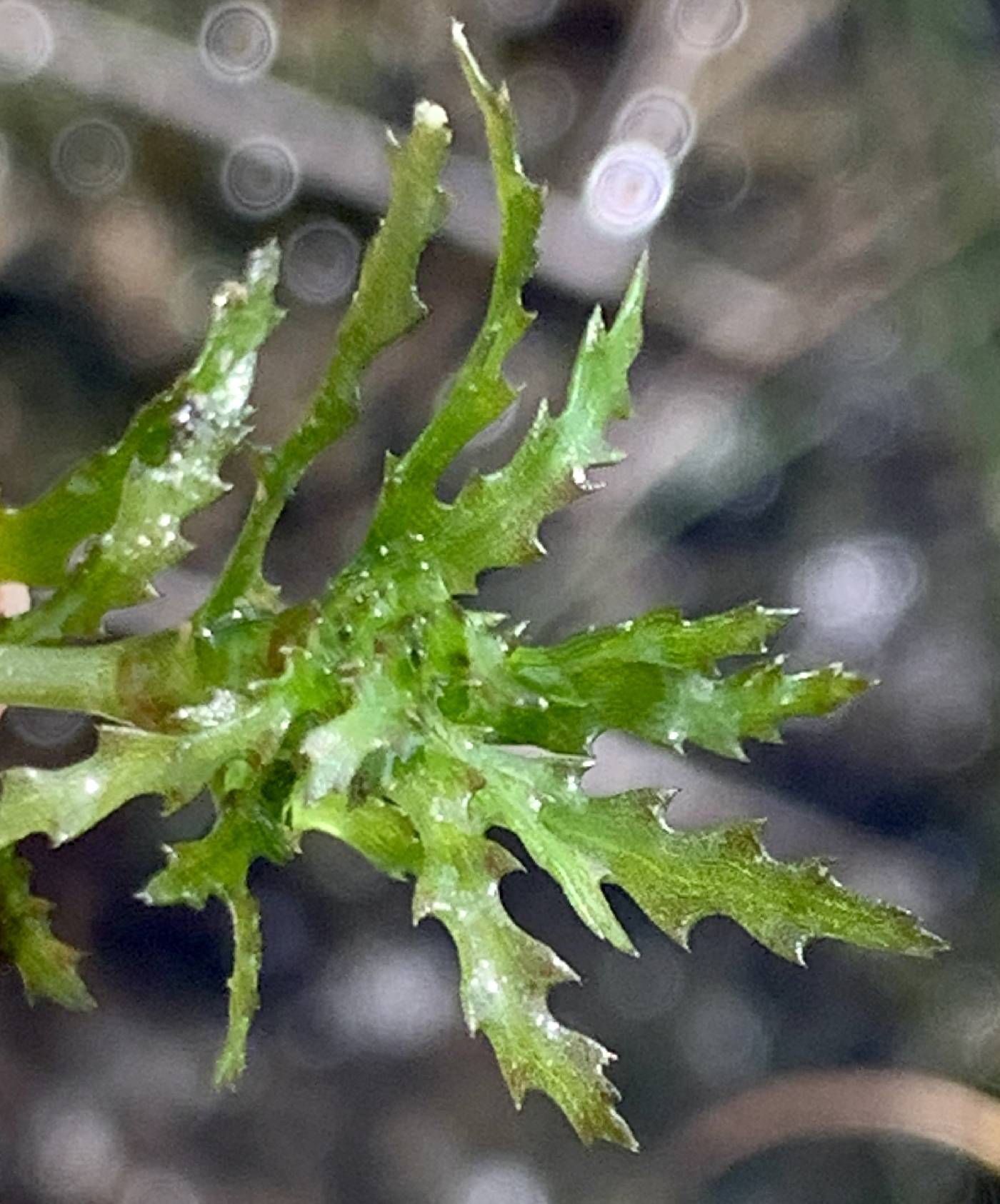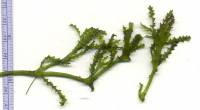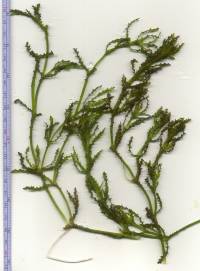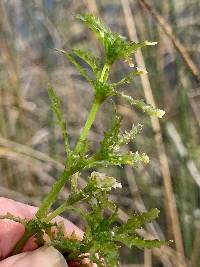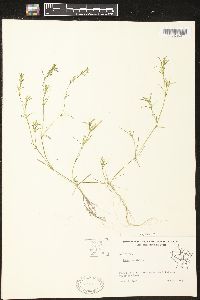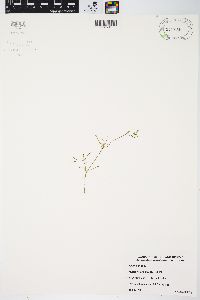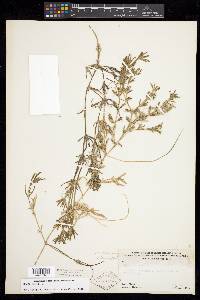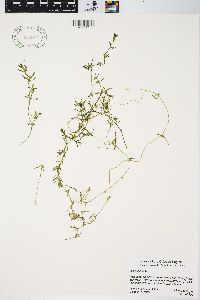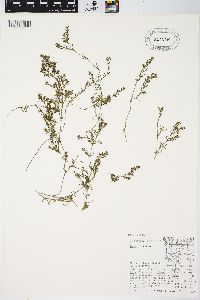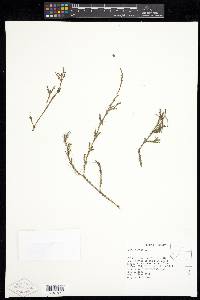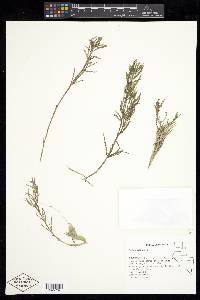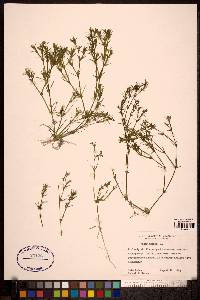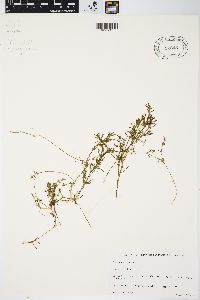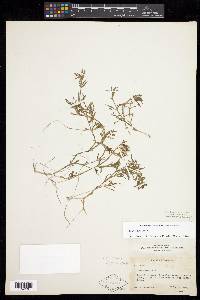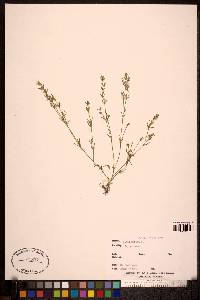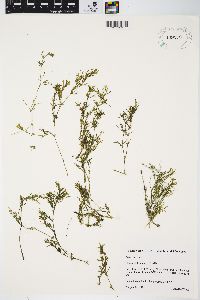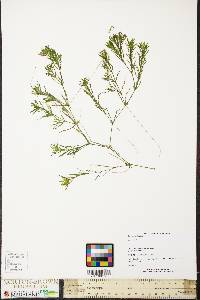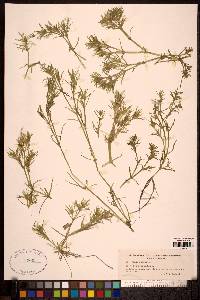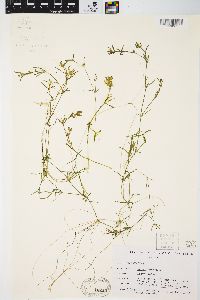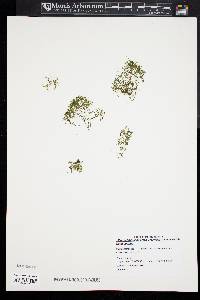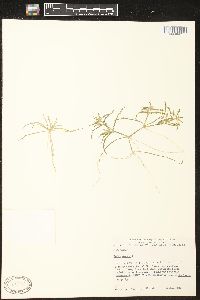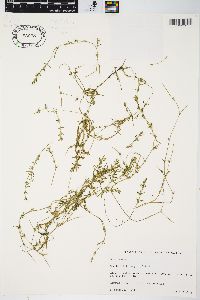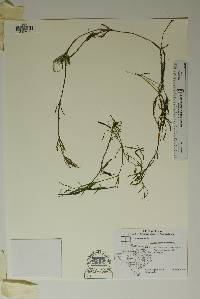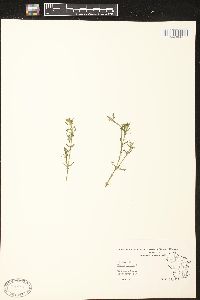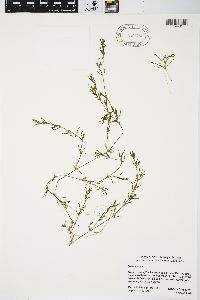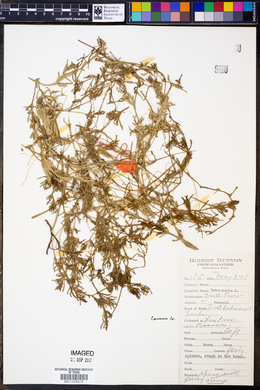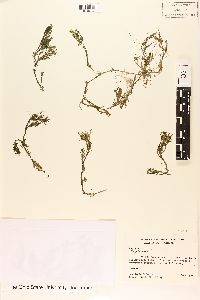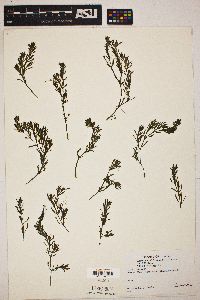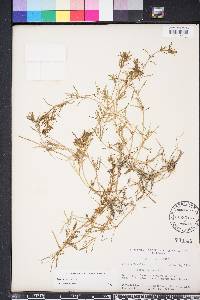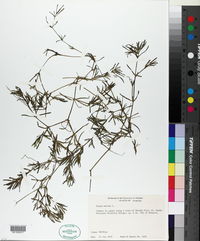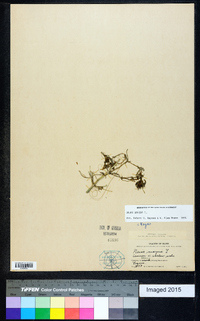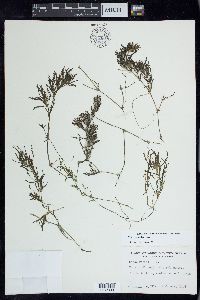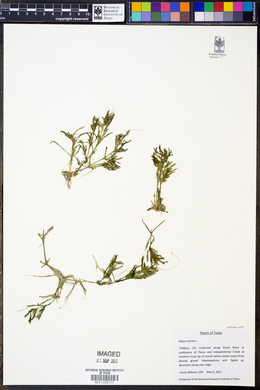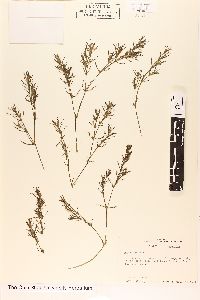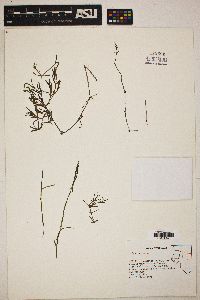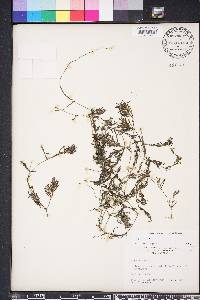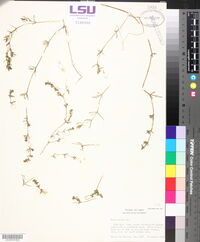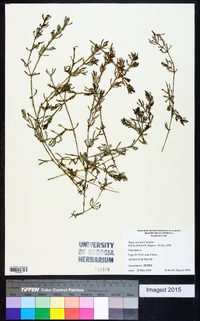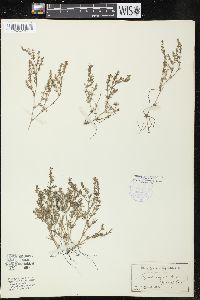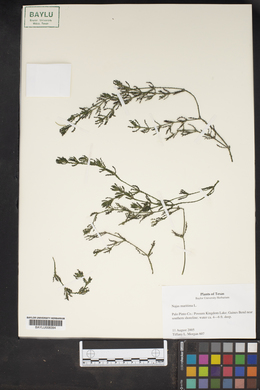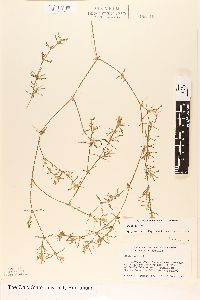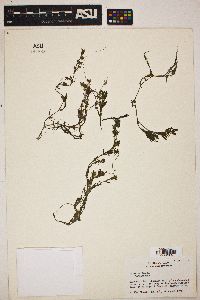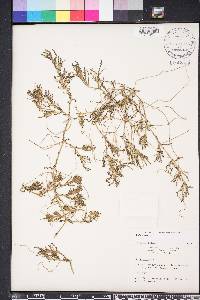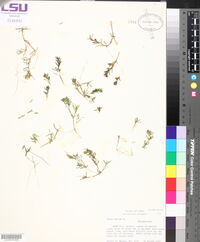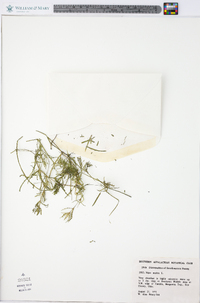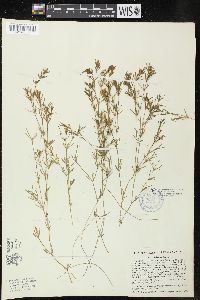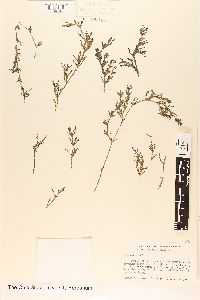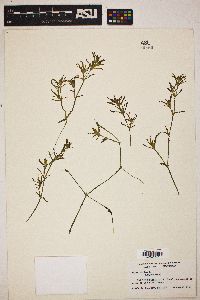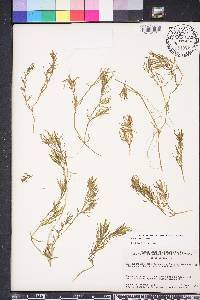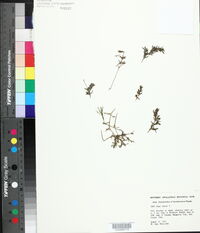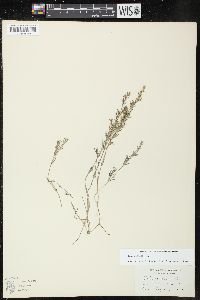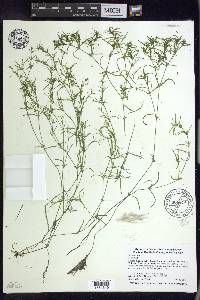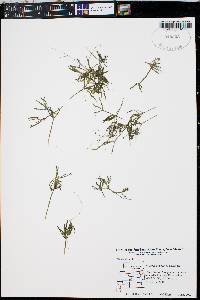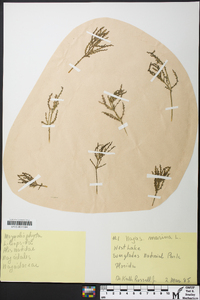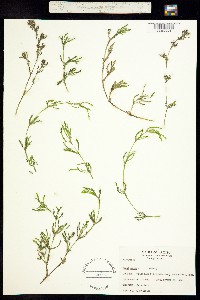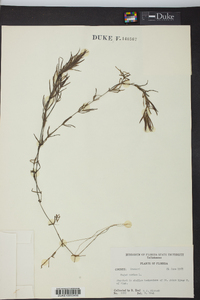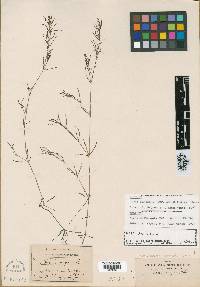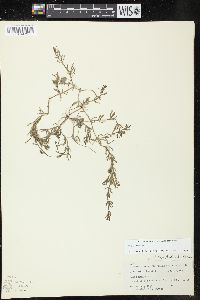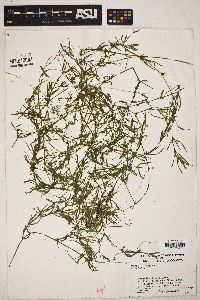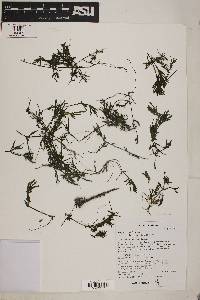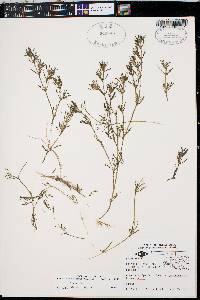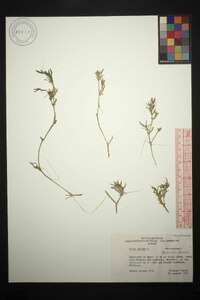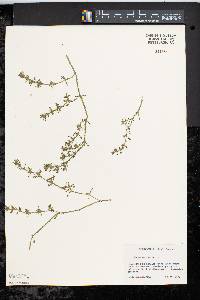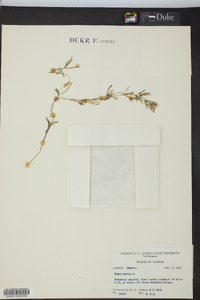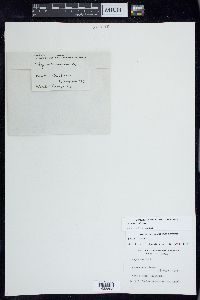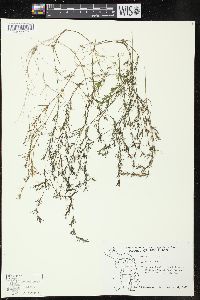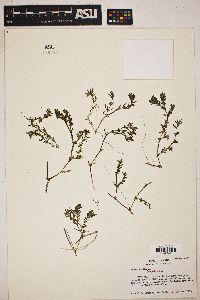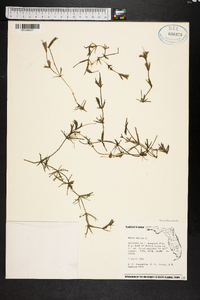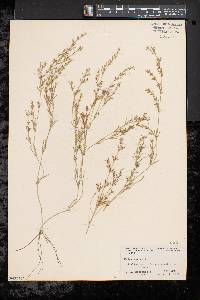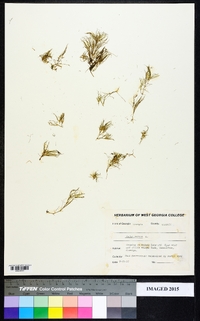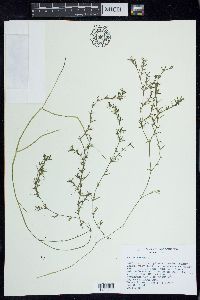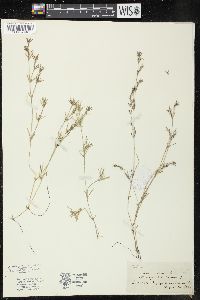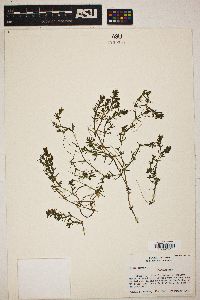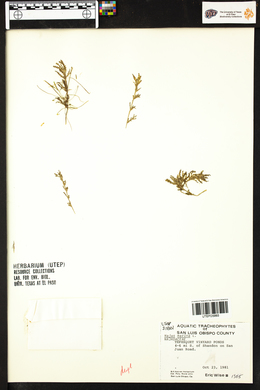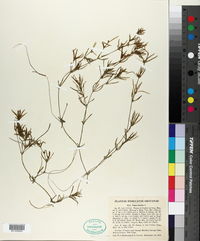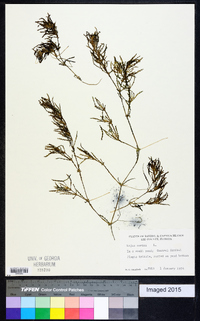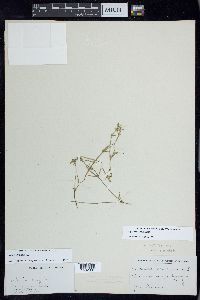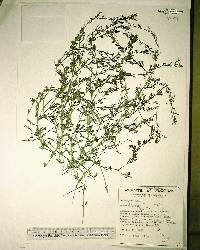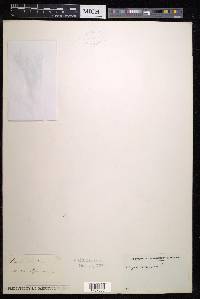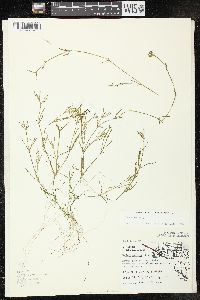Najas marina
|
|
|
|
Family: Hydrocharitaceae
Holly-Leaf Waternymph, more...spiny naiad, holly-leaved waternymph, slender niad, spiny waternymph
[Najas gracilis (Morong) Small, moreNajas major All., Najas major var. angustifolia A. Braun ex K. Schum., Najas major var. gracilis , Najas marina var. mexicana , Najas marina var. recurvata Dudley] |
Stems branched distally, 6--45 cm ´ 0.5--4 mm; internodes 0.3--11 cm, usually with prickles. Leaves spreading to ascending with age, 0.5--3.9 cm, stiff in age; sheaths 2--4.4 mm wide, apex acute; blade 0.4--4.5 mm wide, margins coarsely serrate, teeth 8--13 per side, apex acute, with 1 tooth, teeth multicellular; midvein with prickles abaxially. Flowers 1 per axil, staminate and pistillate on different plants. Staminate flowers in distal to proximal axils, 1.7--3 mm; involucral beaks 2-lobed, 0.3--0.7 mm; anthers 4-loculed, 1.7--3 mm. Pistillate flowers in distal to proximal axils, 2.5--5.7 mm; styles 1.2--1.7 mm; stigmas 3-lobed. Seeds not recurved, reddish brown, ovoid, 2.2--4.5 ´ 1.2--2.2 mm, apex with style situated at center; testa dull, 10--15 cell layers thick, pitted; areoles irregularly arranged, not in distinctive rows, not ladderlike, 3--4-angled, longer than broad, end walls slightly raised. 2n = 12 (Europe). Flowering summer--fall. Brackish or highly alkaline waters of ponds and lakes; 0--1000 m; Ariz., Calif., Fla., Ind., Mich., Minn., Nev., N.Y., N.Dak., Ohio, Pa., S.Dak., Tex., Utah, Wis.; Mexico; West Indies; Central America (El Salvador, Panama); South America; Eurasia. With its prickly internodes and prickles along the abaxial surface of the leaves, Najas marina is the easiest of our Najas to recognize. Over its entire range, the species displays considerable morphologic variability (L. Triest et al. 1986), giving cause for ten subspecies to be recognized (L. Triest 1988). In North America, however, variability is relatively minor, so I am recognizing the taxon at the specific level only (R. R. Haynes 1979). The species should be studied over its entire range, utilizing a variety of approaches, to determine adequately what, if any, infraspecific taxa should be recognized.
Annual submersed aquatic herb to 0.5 m long Leaves: whorled, stalkless, 0.5 - 4 cm long, 0.4 - 5 mm wide, widening to a 2 - 4.4 mm sheath at the base, linear with a short pointed tip, eight to thirteen coarse teeth per side, prickly along lower midvein. Flowers: either male or female, found on different plants (dioecious), borne solitary in leaf axils, green, tiny, with 1.7 - 3 mm long male flowers and 2.5 - 5.7 mm long female flowers. Fruit: achene-like, reddish brown, 2.2 - 7.5 mm long, 1.2 - 2.2 mm wide, egg-shaped, dull, irregularly pitted. Stems: slender, highly branched, 5 - 45 cm long, 0.5 - 4 mm wide, rooting at the nodes, internodes usually prickly. Similar species: Najas marina and Najas minor both have teeth visible to the naked eye. Najas minor can be distinguished by its narrower leaves (to 1.2 mm) with fine teeth, spindle-shaped seeds, and prickle-free leaves and stems. Flowering: mid July to late September Habitat and ecology: Introduced from Eurasia, this species is uncommon in ponds and lakes with alkaline water. Occurence in the Chicago region: non-native Etymology: Najas comes from the Greek name for a river nymph, naias. Marina means "of the sea." Author: The Morton Arboretum FNA 2000, Cronquist et al. 1977, Kearney and Peebles 1969 Duration: Annual Nativity: Native Lifeform: Forb/Herb General: Stout stems, branched toward the tips, 6-45 cm long with internodes 0.3-11 cm long, usually with prickles. Leaves: Narrowly linear and spreading to ascending with age, 0.5-4 cm long, 1-3 mm wide, coarsely spiny toothed along the margin and often spiny on the lower surface along the midrib, tapering to a sharp yellowish brown point, leaf sheath with broadly expanded and rounded shoulder, this entire or with a few minute teeth, the sheath 5-6 mm long, 3-4 mm wide at base. Flowers: Dioecious with 1 flower per axil, staminate flowers 3-4 mm long with 3 stigmas of slightly unequal lengths. Fruits: Ovoid 4-5 mm long, with smooth and shining but finely reticulate seeds. Ecology: Found in brackish or alkaline water, often in still or slow moving waters from 2,500-4,000 ft (762-1219 m); flowers July-August. Distribution: Most states in the U.S. except the southeast and northwest; south to S. Amer.; throughout the world on every continent. Notes: Easily recognizable among the aquatics with the prickly internodes and prickles along the underside of the leaves. Ethnobotany: Unknown Etymology: Najas comes from the Greek Naias for water nymph, while marina means of or by the water, or sea. Synonyms: Najas gracilis, Najas major, Najas major var. angustifolia, Najas marina var. recurvata Editor: SBuckley 2010, FSCoburn 2015 Dioecious; stems 0.5-4.5 dm, 0.5-4 mm thick, often prickly; lvs 0.5-4 cm נ0.5-4.5 mm, spreading or ascending, prickly along the midvein beneath, coarsely serrate
with 8-13 multicellular teeth projecting 0.5-1 mm on each side; anthers dithecal, with 4 microsporangia; seeds 2.2-4.5 mm, reddish-brown, ovoid, pitted, with irregular areolae; 2n=12. Brackish or highly alkaline water of ponds and lakes; irregularly cosmop.; in our range from N.Y. and Pa. to Wis., Ill., and Minn. Gleason, Henry A. & Cronquist, Arthur J. 1991. Manual of vascular plants of northeastern United States and adjacent Canada. lxxv + 910 pp. ©The New York Botanical Garden. All rights reserved. Used by permission. From Flora of Indiana (1940) by Charles C. Deam Indiana Coefficient of Conservatism: C = null, non-native Wetland Indicator Status: OBL |
|
|
|

